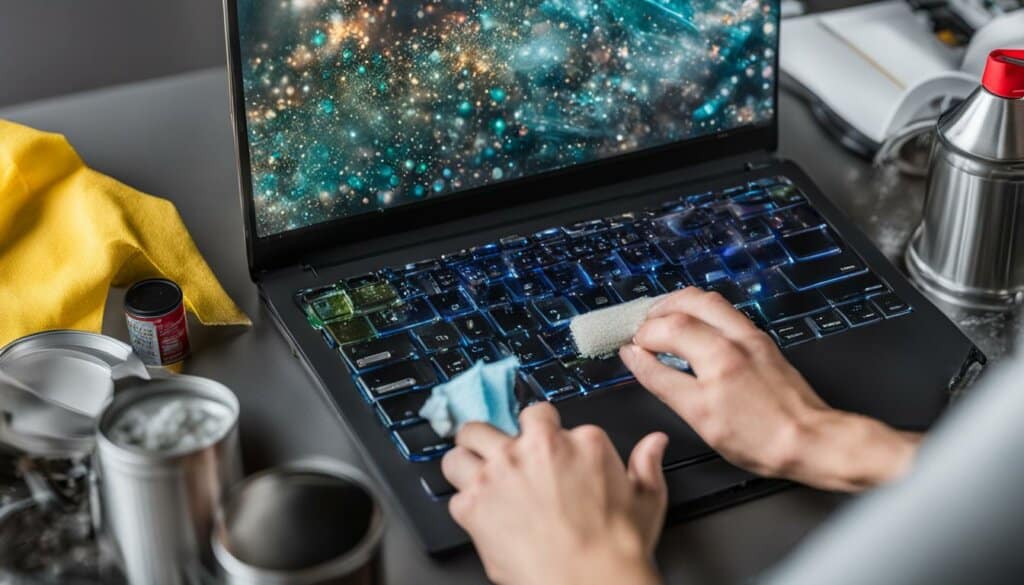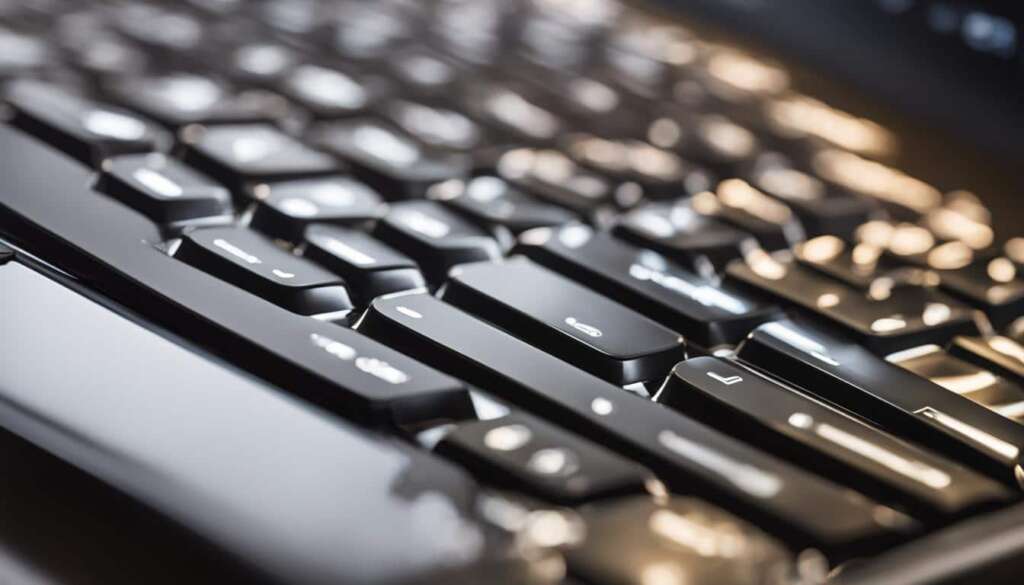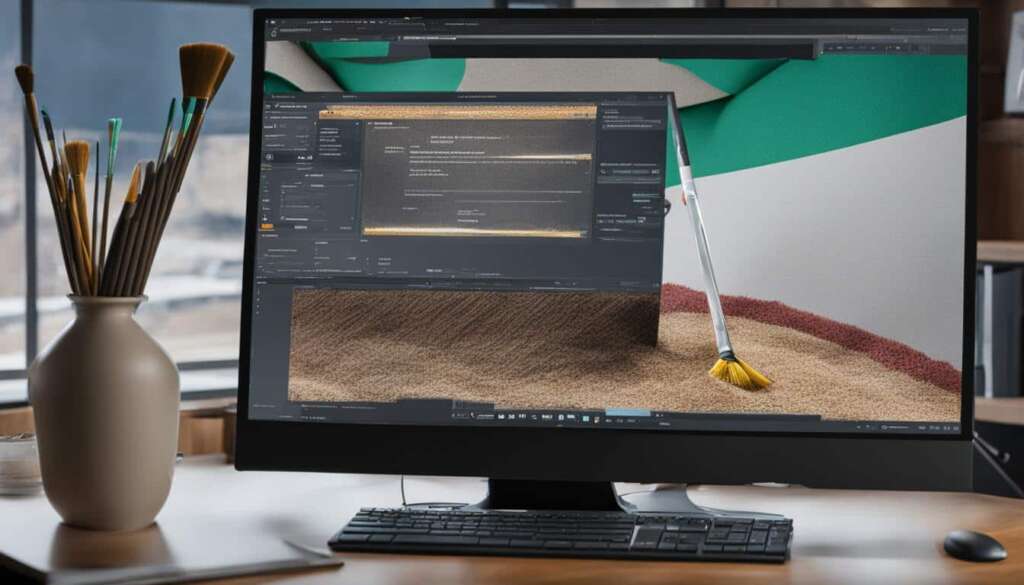Table of Contents
Welcome to our comprehensive tutorial on how to clean your laptop keyboard, providing you with step-by-step instructions to keep your keyboard clean and functioning optimally. Regular cleaning is essential to maintain a clean and comfortable typing experience, ensuring your laptop stays in top shape. Dust, dirt, and spills can accumulate over time, leading to sticky keys, unresponsiveness, or even hardware damage. By following our guide, you’ll learn the best practices for laptop keyboard cleaning and gain valuable insights into common keyboard issues and preventative maintenance tips.
In this tutorial, we will walk you through the entire process of cleaning your laptop keyboard effectively and safely. Whether you’re a student, professional, or casual user, this guide is suitable for all laptop models and brands. We have gathered information from various reliable sources to provide you with detailed instructions, ensuring you have a smooth and hassle-free cleaning experience.
Are you ready to revitalise your laptop keyboard? Let’s dive in!
Step-by-Step Guide to Cleaning Your Laptop Keyboard
To keep your laptop keyboard in optimal condition, it’s crucial to clean it regularly. Follow this step-by-step guide to learn how to clean your laptop keyboard effectively and maintain its functionality.
- Step 1: Shut Down… Fast! If you accidentally spill liquid on your keyboard, act quickly! Shut down your computer and remove the battery immediately to prevent further damage.
-
Step 2: Gather Materials
- A cup or container
- Rubbing alcohol
- Cotton swabs
- Dish soap
- Paper towels
- A flathead screwdriver
- A towel for cleaning
- Step 3: Initial Wipedown Use a paper towel or rag to soak up any spilled liquid. Ensure you clean all surfaces of your laptop to prevent damage.
- Step 4: Remove Keys Take a high-resolution picture or draw a layout of your key placement. Gently pry off the keys using a flathead screwdriver, keeping track of their arrangement.
- Step 5: Clean Keys Soak the keys in warm water mixed with dish soap. Avoid bending any metal guide bars, and gently scrub each key to remove dirt and grime.
- Step 6: Clean Keyboard Moisten a cotton swab with rubbing alcohol and clean around each key post. Be thorough in removing any liquid that may have seeped underneath the keys.
- Step 7: Clean Keys… Again Let the keys air dry, and if necessary, use rubbing alcohol to clean the backs and key carriers. Ensure they are completely dry before reattaching them.
- Step 8: Reattach Everything Once dry, reattach the keys, key carriers, and battery in reverse order. Make sure everything is properly aligned and functioning as expected.
- Step 9: Done! Test your keys and enjoy a revitalized keyboard. If any keys still stick, repeat the cleaning process until they function properly.
| Step | Description |
|---|---|
| 1 | Shut down your laptop and remove the battery immediately if liquid is spilled on the keyboard. |
| 2 | Gather the necessary materials such as rubbing alcohol, cotton swabs, and a flathead screwdriver. |
| 3 | Soak up any spilled liquid with a paper towel or rag, ensuring all surfaces are cleaned. |
| 4 | Take a picture or draw a layout of the key placement, then remove the keys using a flathead screwdriver. |
| 5 | Clean the keys in warm water mixed with dish soap, avoiding damage to metal guide bars. |
| 6 | Use rubbing alcohol and cotton swabs to clean around each key post, removing any liquid that may have seeped underneath. |
| 7 | Lay the keys out to dry and use rubbing alcohol to clean the backs and key carriers if necessary. |
| 8 | Reattach the keys, key carriers, and battery in reverse order, ensuring proper alignment. |
| 9 | Test the keys to ensure they function correctly. Repeat the cleaning process if needed. |
Follow these cleaning steps to keep your laptop keyboard in pristine condition. By maintaining a clean keyboard, you can ensure smooth and comfortable typing for years to come.
Common Keyboard Issues and Solutions
If you’re facing problems with your laptop keyboard, don’t worry! Many common keyboard issues can be easily resolved. Whether you’re dealing with sticky keys, unresponsive keys, broken keys, or software conflicts, we’ve got you covered with effective troubleshooting solutions.
Cleaning Underneath the Keys
If your keys are unresponsive, dust and debris might be the culprits. To fix this issue, use compressed air to blow away dirt from underneath the keys. Alternatively, you can gently pry off problematic keys for thorough cleaning.
Addressing Sticky Keys
Spills can cause keys to become sticky, making typing difficult. To address this problem, start by turning off your laptop. Then, clean underneath the keys using isopropyl alcohol or warm soapy water. This will help remove any residual stickiness and restore your keyboard’s functionality.
Replacing Broken Keys
If a key is physically damaged, it may need to be replaced. Carefully remove the broken key and order a replacement online. Ensure that you purchase a key specifically designed for your laptop model to ensure a perfect fit.
Software and Driver Conflicts
Keyboard issues can sometimes be caused by software conflicts or outdated drivers. To fix this, start by restarting your laptop. Then, update your operating system and keyboard drivers. Additionally, check your accessibility settings to ensure they’re properly configured.
External Factors
If the DIY fixes don’t work, external factors might be the cause of your keyboard issues. Disconnect any external devices connected to your laptop and check for software conflicts in “Safe Mode.” If the problems persist, it’s best to seek professional assistance to resolve the issue.

With these troubleshooting solutions, you can effectively resolve common keyboard issues and restore your laptop keyboard’s functionality. Whether it’s cleaning underneath the keys, addressing sticky keys, replacing broken keys, or resolving software conflicts, these steps will help you get back to smooth and uninterrupted typing.
Tips for Maintaining a Clean Keyboard
Keeping your laptop keyboard clean is crucial for maintaining its performance and preventing damage. By following these simple tips, you can ensure that your keyboard remains in top condition:
- Clean Regularly: It is recommended to clean your laptop keyboard every 2-3 months or whenever you notice the accumulation of dirt, dust, or grime. Regular cleaning helps to prevent the buildup of debris that can affect the functionality of your keys and the overall performance of your keyboard.
- Use a Keyboard Cover: Consider investing in a silicone keyboard cover. This protective cover acts as a barrier against spills, dust, and other potential contaminants. It helps to keep your keyboard safe from accidental liquid damage and prevents debris from settling between the keys.
- Be Gentle: When cleaning your keyboard, it’s important to use gentle motions to avoid damaging the keys or the keyboard itself. Avoid using excessive force or harsh cleaning agents that could potentially harm the delicate components of your keyboard.
- Avoid Eating and Drinking: To prevent spills and crumbs from finding their way into your keyboard, it is best to refrain from eating or drinking near your laptop. Accidental spills can cause significant damage to your keyboard and affect its functionality.
- Remove Dust and Debris Regularly: Dust and debris can accumulate between the keys and affect the performance of your keyboard. Use a soft-bristled brush, compressed air, or a microfiber cloth to gently remove any buildup. Taking the time to remove dust and debris regularly will help to maintain a clean and functional keyboard.
By incorporating these maintenance tips into your routine, you can extend the lifespan of your laptop keyboard and ensure a smooth and enjoyable typing experience.
Conclusion
Regularly cleaning your laptop keyboard is essential for maintaining its functionality and longevity. By following the step-by-step guide and implementing proper maintenance techniques, you can keep your keyboard clean and free from issues caused by dirt, spills, and debris. Remember to be gentle, use the appropriate cleaning materials, and seek professional help if needed. With a clean keyboard, you can enjoy a smooth and comfortable typing experience on your laptop.
In summary, the laptop keyboard cleaning process involves shutting down the computer in case of spills, gathering the necessary materials, performing an initial wipedown, removing and cleaning the keys, thoroughly cleaning the keyboard, and finally reattaching everything. Additionally, we highlighted common keyboard issues such as unresponsive or broken keys and provided troubleshooting solutions. We also gave tips for maintaining a clean keyboard, including the use of a keyboard cover and regular cleaning to prevent damage.
By incorporating these practices into your laptop maintenance routine, you can ensure that your keyboard remains in optimal condition, allowing you to work efficiently and comfortably. So make keyboard cleaning a regular habit, and enjoy the benefits of a clean and functional laptop keyboard for years to come.
FAQ
How often should I clean my laptop keyboard?
Aim to clean your laptop keyboard every 2-3 months or when you notice buildup.
What should I do if I spill liquid on my keyboard?
Shut down your computer and remove the battery immediately to prevent further damage.
How can I clean underneath the keys?
Use compressed air to blow away dirt or gently pry off problematic keys for cleaning.
What should I do if my keys are sticky?
Turn off the laptop, clean underneath the keys, and use isopropyl alcohol or warm soapy water to clean sticky keys.
How do I replace a broken key?
Carefully remove the damaged key and order a replacement online.
What should I do if my keyboard is not functioning properly after cleaning?
Restart the laptop, update your operating system and keyboard drivers, and check for any accessibility settings.
How can I avoid spills and debris on my keyboard?
Keep food and drinks away from your laptop and consider using a silicone keyboard cover for extra protection.







